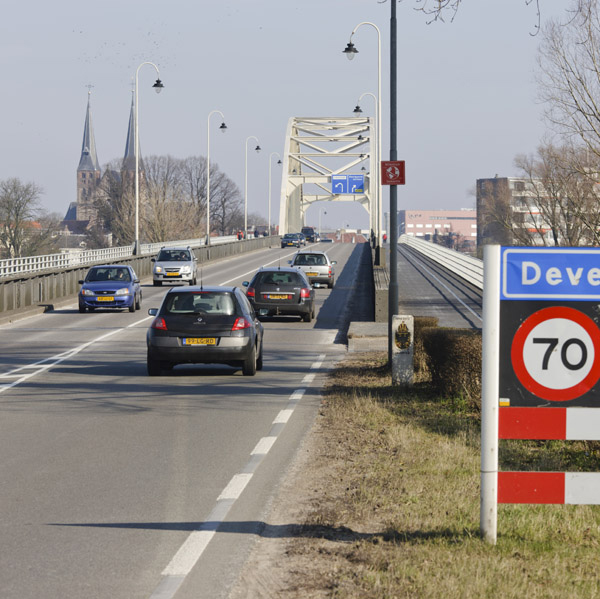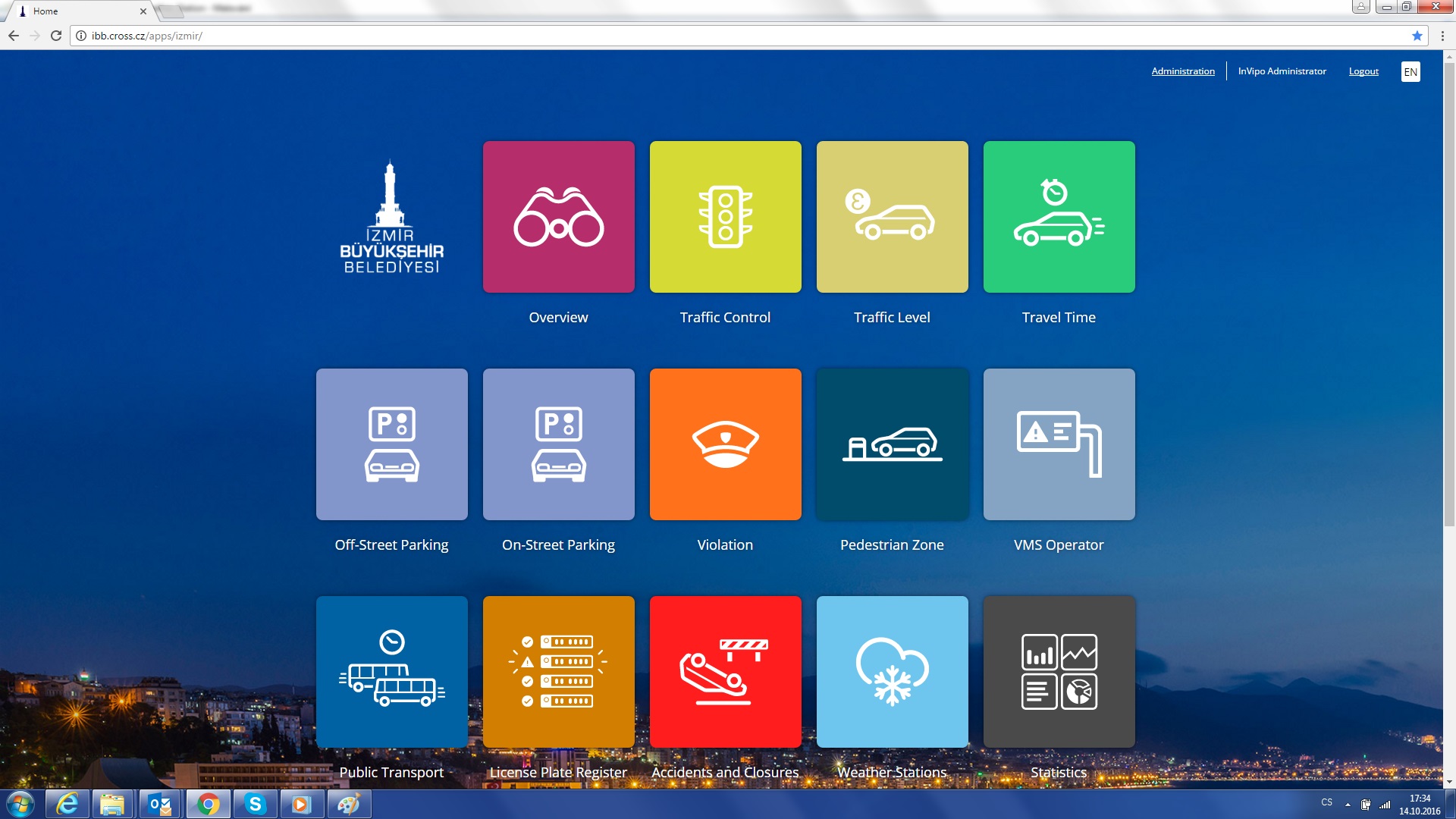
Paul van Koningsbruggen and Dave Marples of
The first steps were taken in the last decade and in most industrialised countries like the Netherlands or the United Kingdom traffic management has already been centralised in regional Traffic Control Centres (TCCs); the UK's
New challenges
Such concentration brings a new challenge. Traffic management started out addressing the most obvious road segments - tunnels, bridges, complex traffic nodes and motorways encircling major cities - and its success gave rise to demands to widen its geographical scope and to increase the interventions made on the network. A perfect example is the Dutch initiative aimed at delivering a faster and simpler approach to traffic bottlenecks by using smart adaptations to the existing roads, such as rush hour lanes and hard shoulder running, in preference to civil construction. Such smart adaptations require the watchful eye of a traffic operator to maintain safety.As more and more systems for monitoring and managing these smartly adapted roads are placed in the regional TCCs, the demand for flexible task allocation to the operators arises and the number of different tasks they may be called upon to perform increases. They might need to suddenly monitor and manage a larger area and perhaps hand over a part of this area to a colleague the moment they need to focus on an incident, operate a bridge, tunnel, rush hour lane or hard shoulder. That same operator might then take back responsibility once the demanding task has been completed. In addition, a control room supervisor should be able to allocate areas and road segments to operators in a flexible way in light of current and foreseen circumstances. If we can meet these requirements for flexible task management then traffic management can widen its geographical scope in an affordable manner, with ambition and cost-efficiency coming together.
Approach
The Rijkswaterstaat has adopted an enterprise architecture-based approach to modernising its TCCs to meet these new demands. The migration to this new architecture is performed in two ways. In the first, the ad hoc and piecemeal systems which have been introduced over previous years are being rationalised and, where necessary, replaced with central management systems developed on behalf of Rijkswaterstaat for all their regional TCCs. This leads to a significant reduction in the applications and systems Rijkswaterstaat needs to work with and an associated cost reduction. In the second, a Process Manager has been introduced to enable flexible task allocation and switching for the traffic operators. With these two approaches, newly managed road segments can be added to the responsibility of a regional TCC, while at the same time reducing complexity and even reducing costs.The Process Manager was first deployed in the regional TCC for the south-west of the Netherlands, opened by Rijkswaterstaat in 2005.
This traffic management centre featured support for: digital camera feeds; centralised pan-tilt-zoom camera control; uniform workplaces for operators with individual video walls; video, alarm, sensor reports and actuator configuration, all from the desktop; touchscreen systems for the operator to control the individual workspace; and camera control and (maritime) phone systems integrated into touchscreen systems.
As far as is reasonably practical each workstation is a 'glass cockpit' which can be configured for the task at hand. This approach lends itself to dynamic reconfiguration to meet the changing demands of the on-road situation.
In the regional TCC in Rhoon, 15 workstations were provisioned. It is the job of the Process Manager to allocate the appropriate tasks to each workstation user. The Process Manager is currently also in operation in the north-west Netherlands (Wijde Blik) and in the National TCC.
Operation
Operators come on shift, log in and are allocated tasks by the system according to the role that is to be performed by them.
The operator is free to arrange his or her workstation according to his or her own preferences and these are remembered by the system between sessions. The configuration is specific to the operator and gives him or her a sense of ownership.
During normal operation the operators respond to ongoing traffic situations to ensure the ongoing free flow of traffic with the normal levels of logging and audit trail generation that one expects in any modern traffic management environment.
In an exceptional condition (such as responding to an incident), resources and responsibilities can be switched between operators according to priorities which are dynamically determined by the control room supervisor - perhaps one operator is given the responsibility for managing the incident itself, and another for managing the congestion on the roads around the incident. The tasks that those operators were previously responsible for can be automatically switched to other operators in the TCC with no loss of state or current activity.
Technical implementation
The new architecture is based around an all-IP infrastructure, with converters to map the existing equipment across to the new environment.Video, control and monitor feeds are all delivered to the TCC over IP via a secure, redundant fibre ring and are switched to individual operators' desks. Outstation equipment such as the control systems for specific bridges and tunnels are co-located at the infrastructure concerned for safety and local control purposes. A remote interface to these components is provided using network computing approaches such as VNC and Citrix. This approach offers several advantages over a more centralised approach: it allows staff at the outstation location to see what is going on and to have exactly the same interface as the TCC staff; and it offers a fallback capability for the case where the TCC itself fails or when local staff need to seize control.
The Process Manager is the component which is responsible for the switching of data feeds to individual desktops. It is an open architecture client server system which follows a philosophy of adopting best-of-breed open-source components as core building blocks.
The Process Manager is implemented as a mission-critical component with very high availability and acts as the 'spider in the web' for the control of the data streams to the individual desktop. The system architecture features multiple levels of fallback so that even in the case of failure of one of the subsystems a useful level of functionality can still be delivered.
The future
While the demand for traffic management grows, modern technology continues to enable cost-efficient traffic management systems. The Process Manager, as described in this article, is a typical example of a new component that enables a regional TCC to widen its scope in an affordable manner which it helps to combine ambition and cost-efficiency.The new TCC architecture - including the process manager - is now being rolled out to the other TCCs across the Netherlands with the third TCC having just gone live in May 2011. The addition of more TCCs means that tasks can be handed off not just intra-TCC but also between TCCs as well. This is a very powerful capability, offering geographic diversity for disaster mitigation and also potentially allowing one TCC to take over the functions from another for out-ofhours working or load balancing.












